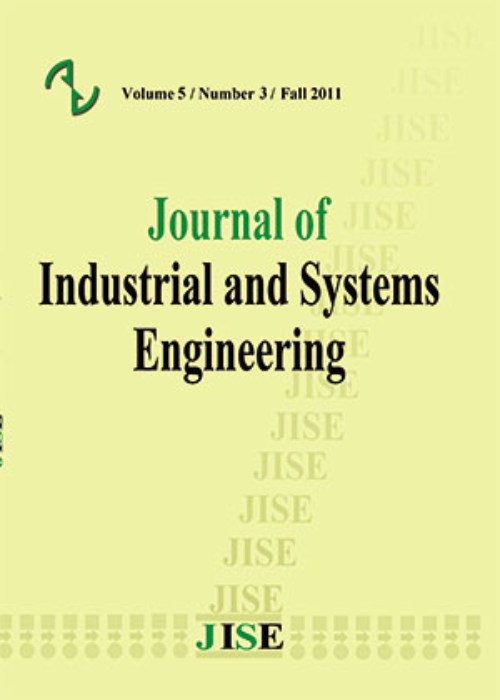فهرست مطالب
Journal of Industrial and Systems Engineering
Volume:5 Issue: 2, Summer 2011
- تاریخ انتشار: 1391/08/03
- تعداد عناوین: 4
-
-
Page 63In this paper, seller-buyer supply chain coordination with general side-payment contracts is introduced to gain the maximum possible chain profit. In our model, the logistics costs for both buyer and seller are considered and the final demand is also supposed to be a decreasing function of the retail price. Since parties aim to maximize their individual profits, the contractual parameters are set in a way that these decisions become aligned with system optimal decisions. Therefore, a side payment contract is suggested in our model to assign the chain surplus profit to the chain members such that they have no intention to leave the coalition. Then,we change the contract into a quantity discount-like contract which makes the contract much easier to be implemented in a real situation. The model will also be extended to include two buyers and a single seller. Finally, by numerical analysis, we show that by using this kind of contract, a significant improvement in the chain members’ profits and the total chain revenue will be achieved.Keywords: Seller, Buyer Supply Chain, Supply Chain Coordination, Supply Chain Contracts, Game Theory
-
Continuous Review Perishable Inventory System with One Supplier, One Retailer and Positive Lead TimePage 80We consider a two-echelon single commodity inventory system with one warehouse(supplier)at the higher echelon and one retailer at the lower echelon. The retailer stocks individual items of a commodity and satisfies unit demands which occur according to a Poisson process. The supplier stocks these items in packets and uses these packetsto: (i) satisfy the demands that occur for single packet and that form an independent Poisson process and (ii) replenish the retailer's stock. The supplier implements (s,S)ordering policy to replenish the stock of packets and the lead time is assumed to have exponential distribution. Though the retailer's stock is replenished instantaneously by the supplier if packets are available, and a random stock out period may occur at the retailer node when the supplier has zero stock. It is assumed that because of better stocking facility that is usually available at the warehouse, the items do not perish at the warehouse, but they do perish at the retailer node. It is also assumed that the items have exponential life time distribution at the lower echelon. The joint robability distribution of the inventory levels on both nodes is obtained in the steady state. Various system performance measures are calculated. The long run total expected cost per unit time is derived. These results are illustrated with numerical examples. Some special cases are discussed in detail.Keywords: Stochastic inventory, Supply chain management, Poissondemand, Perishable items, Positive lead time
-
Page 107This paper breaks new ground by modelling lot sizing and scheduling in a flexible flow line (FFL)simultaneously instead of separately. This problem, called the ‘General Lot sizing and Scheduling Problem in a Flexible Flow Line’ (GLSP-FFL), optimizes the lot sizing and scheduling of multiple products at multiple stages, each stage having multiple machines in parallel. The objective is to satisfy varying demand over a finite planning horizon with minimal inventory, backorder and production setup costs. The problem is complex as any product can be processed on any machine but with different process rates and sequence-dependent setup times & costs. The efficiency of two alternative models is ssessed and evaluated using numerical tests.Keywords: Lot sizing, Scheduling, Flexible Flow Line, Mathematical Modelling
-
Page 120Process capability of a process is defined as inherent variability of a process which is running under chance cause of variation only. Process capability index is measuring the ability of a process to meet the product specification limit. Generally process capability is measured by 6 assuming that the product characteristic follows Normal distribution. In many practical situations the product characteristics do not follow normal distribution. In this paper, we describe an approach of estimating process capability assuming generalised g and h distribution proposed by Tukey.Keywords: Process Capability, Tukey Univariate g, h Distribution


